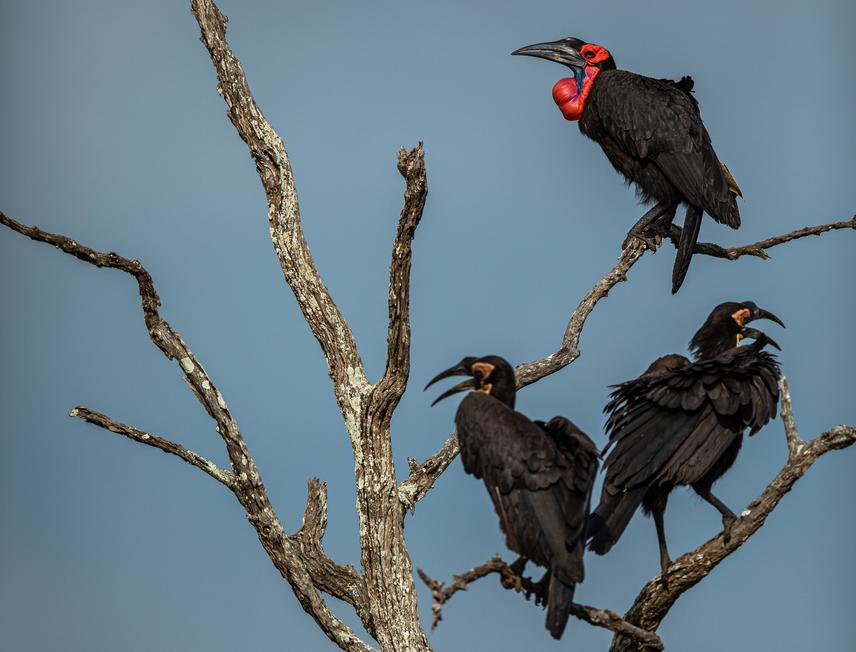Kyle-Mark Middleton
Southern Ground-Hornbills are large, ground-foraging birds that occur within sub-Saharan savannas and are threatened by habitat loss and climate change. Previous research on the species has shown that high temperatures significantly affect their reproduction in summer, but a recent study provided evidence that high winter temperatures (which can often exceed 30ºC), combined with reduced shade availability associated with this dry season, can also pose thermoregulatory challenges for the species. Winter is a crucial season in which animals must not only survive, but also emerge in good enough condition to breed, yet winter ecology is poorly understood. Considering the increase in frequency and intensity of heatwaves associated with climate change, these results raise concerns about the species' vulnerability to elevated temperatures throughout the year.

A female Southern Ground-Hornbill (top bird) with her offspring from previous breeding attempts (bottom two birds). © Jo Cooper.
This project aims to examine how rising temperatures impact the habitat use, behaviour, and body condition of Southern Ground-Hornbills across seasons. Using tracking devices, we will specifically explore how temperature influences habitat use and trade-offs between thermoregulation and other vital behaviours (foraging and vigilance), and how these trade-offs will, in turn, affect body condition and reproductive outputs. These results will provide crucial insights into how ground-hornbills navigate their environment, and will advance our scientific understanding of how large, ground-foraging birds, as well as other species, including some Endangered mammals, might be affected by climate warming during both winters and summers. The results will also help inform conservation strategies and guide reintroduction efforts by identifying key habitat features for effective thermoregulation and foraging.
The study will take place in the Associated Private Nature Reserves (APNR), a protected area on the western boundary of the Kruger National Park. Its location serves as an important buffer zone between a core conservation area and more urban regions. Thanks to its rich biodiversity, the APNR supports a thriving tourism economy that employs many local community members. This project aims to involve the local community and tourism lodges in some of the planned activities in order to shed light on the species, highlight their environmental and cultural value, and help instil a sense of pride in the efforts to conserve them.
Header: Southern Ground-Hornbill foraging for an invertebrate. © Kevin MacLaughlin.